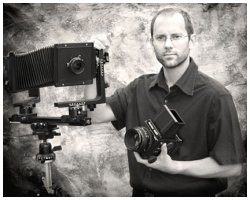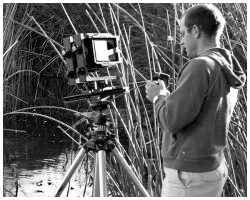

When I was 17 my mother gave me a photography portfolio book entitled Yosemite and the Range of Light. The author of this little masterpiece was a man called Ansel Adams. After seeing these photos and just what can be achieved by the medium of photography, I embarked on a naïve effort to emulate those black and white prints. Armed with an Olympus OM-1 and a 50mm lens, I snapped away and was later introduced to the darkroom by a friend of my parents.
Now, older and wiser, I have moved into large format photography, and use a Horseman 4x5 view camera to take pictures that truly are able to deliver the detail and tonal qualities that film can offer. Film – not digital…. All the techniques I use to make prints are time tested, and I always try to remain true to the original aesthetic, using chemicals and paper that can produce truly outstanding results. These techniques have not changed since Ansel’s time, and I still use his books as a primary reference.
On seeing my photographs, the first question is “what type of camera did you use?” Well this will mean nothing to the majority, but for those folks who are of the same photo-geek mindset, here are my tools:
I use mainly my Wista or Horseman 4x5, equipped with a 90mm, 150mm, 210mm, 300mm APO Schneider lens set
or a Mamiya RZ67 PRO II medium format set up. These are loaded with either Tri-X or FP-4 film, and developed in Kodak HC-110 or Kodak D-76 (or D-23 two bath), then printed onto Oriental Seagull or Ilford Galerie fiber based paper, developed in dektol (a few are on Ilford Multigrade resin paper). All my fine fiber prints are dual fixed, selenium toned for permanence and washed to archival standards. My darkroom consists of a section of the garage the wife has allowed me to take over, in which is housed two Beseler 45 MXT enlargers (with an Aristo D2 and an Aristo VC cold light head), equipped with a Beseler 150mm HD lens.
To obtain a fine print takes an often excruciating amount of exacting time. Many test prints are needed before I arrive at “the one”, where what I saw at the point of taking the photograph materializes before me. Ansel called this “the art of visualization” and often represents a departure from reality. It is not too often that I am able to exact what I visualise, but occasionally I get one just right…
I hope you enjoy them.

